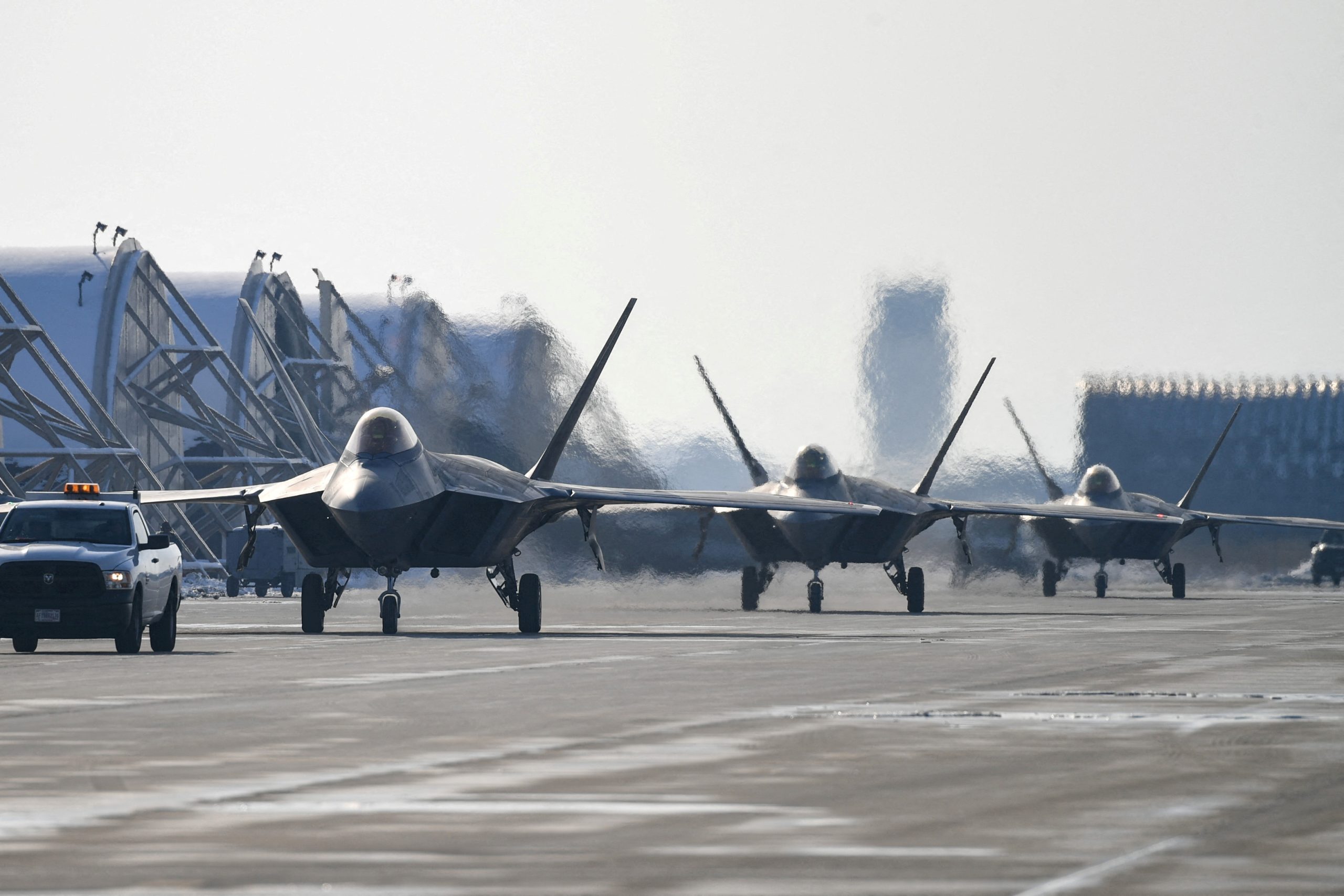
[elfsight_social_share_buttons id=”1″]
The United States and South Korea staged drills for the second time in a week on Friday with some of their latest warplanes, despite North Korean saying that the exercises were increasing tensions on the peninsula.
On Thursday, North Korea‘s Foreign Ministry said drills by the United States and its allies had reached an “extreme red line” and threatened to counter the U.S. moves in the region with “overwhelming nuclear force.”
South Korea and the U.S. conducted a joint air exercise over the sea to the west of the Korean Peninsula on Friday, with warplanes such as South Korea‘s F35A, and United States’ F-22 and F-35B participating, the South Korean military said in a statement.
The Air Forces of both countries “will continue to strengthen joint drills to have strong response capabilities and readiness against North Korea‘s nuclear and missile threats,” it said in a statement.
Last year, North Korea conducted a record number of ballistic missile tests, which are banned by U.N. Security Council resolutions. It was also observed reopening its shuttered nuclear weapons test site, raising expectations of a nuclear test for the first time since 2017.
Pyongyang was not interested in dialogue as long as Washington pursued hostile policies, said the statement carried by North Korea‘s state news agency.
“This is a vivid expression of the U.S. dangerous scenario which will result in turning the Korean peninsula into a huge war arsenal and a more critical war zone,” the North Korean statement said.
The United States has pushed to expand military, political, and economic ties across Asia.
In Manila on Thursday, Austin and his counterpart there announced that the Philippines had granted the United States expanded access to its military bases amid mounting concern over China’s increasing assertiveness in the disputed South China Sea and tensions over self-ruled Taiwan.
When asked about the tensions with North Korea during his stop in the Philippines, Austin said that the U.S. goal was to promote greater security and stability and that it remained committed to defending South Korea.
“We will continue to work alongside our allies and train and ensure that we maintain credible and ready forces,” he said.
‘NO HOSTILE INTENT’
In Washington, the White House rejected the North Korean statement and reiterated a willingness to meet with North Korean diplomats “at a time and place convenient for them.”
“We have made clear we have no hostile intent toward the DPRK and seek serious and sustained diplomacy to address the full range of issues of concern to both countries and the region,” said a spokesperson for the White House National Security Council, refering to the Democratic People’s Republic of Korea, the official name for North Korea.
More than 28,500 American troops are based in South Korea as a legacy of the 1950-1953 Korean War, which ended in an armistice rather than a peace treaty.
“We reject the notion that our joint exercises with partners in the region serve as any sort of provocation. These are routine exercises fully consistent with past practice,” the White House statement said.
In New York, South Korea‘s foreign minister, Park Jin, met with the United Nations Secretary-General Antonio Guterres on Wednesday and called for the U.N.’s continued attention to North Korea‘s recent provocations and efforts to implement sanctions on the reclusive regime.
Guterres said any resumption of nuclear testing by North Korea would deal a devastating blow to regional and international security, and reaffirmed support to build lasting peace on the Korean peninsula, according to Park’s office.
Park is on a four-day trip to the United States, which will include a meeting with U.S. Secretary of State Antony Blinken in Washington on Friday.
Copyright 2023 Thomson/Reuters. Edits for FISM News by Michael Cardinal.
